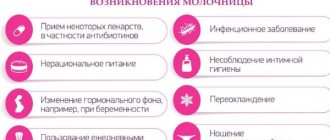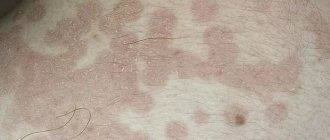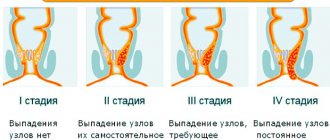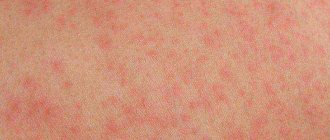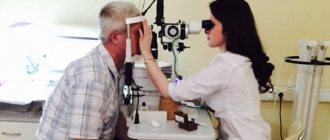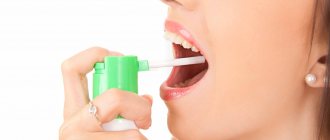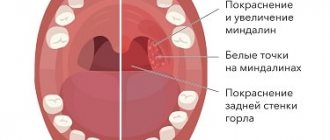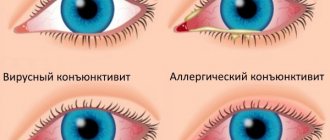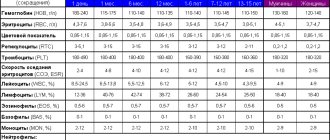When sinusitis is diagnosed, only a specialist can tell you how to quickly cure it. Treatment for sinusitis is mandatory: it cannot go away on its own. If you start sinusitis, then surgical intervention or the development of meningitis cannot be ruled out.
Sinusitis is a disease accompanied by a stuffy nose with the formation of yellow or green mucus. Most often it occurs due to a cold or allergies. It may appear due to hypothermia of the body or due to the fact that ARVI has not been completely cured. Sinusitis is much more common in people with an abnormal nasal septum. Even untreated teeth or chronic tonsillitis can cause the disease. The disease can be either acute (treatment will take no more than 3 weeks) or chronic (up to several months). When purulent discharge appears, this is catarrhal sinusitis, requiring immediate treatment.
Symptoms of sinusitis
Sinusitis is an inflammation that occurs in the air spaces in our skull called sinuses. Typically, inflammation begins in the sphenoid sinus, which is located between the eyes. Sinusitis can be caused by bacteria, viruses and fungi. If you do not pay attention to the symptoms of sinusitis and do not treat them for a long time, then, for example, sinusitis of the sphenoid sinus can cause vision problems, ear infections and even meningitis - inflammation of the membranes of the brain.
The most common symptoms of sinusitis are nasal congestion and yellow or green mucus in the sinuses and back of the throat. Common symptoms of sinusitis include soreness in the eyes, nose, cheeks and forehead. Less common symptoms of sinusitis include bad breath, impaired sense of smell, high fever, sore throat and general fatigue. And of course, patients with sinusitis begin to cough, especially at night.
One of the dangers of sinusitis is that it can lead to the development of meningitis. The cavity in which the brain is located is separated from the frontal, sphenoid and ethmoid sinuses by a very thin bone. Through this bone, infection can enter the fluids and tissues surrounding our brain quite easily. That is, potentially viruses and bacteria that cause sinusitis can pose a danger to the entire body.
Sinusitis - what not to do, what treatment is dangerous?
When diagnosing sinus inflammation, you need to be very attentive to your health. To avoid the risk of complications, you should clearly know which procedures and medications can and cannot be used.
Taking medications, using drops and sprays should be carried out strictly in accordance with the attached instructions. It is strictly forbidden to increase or decrease the dosage; this can lead to unpredictable health consequences. Also, you cannot change the duration of the course prescribed by the doctor, even if it seems that recovery has occurred. This rule especially applies to taking antibiotics.
You should not use traditional methods of treatment without consulting a doctor. Many medicinal herbs can provoke an allergic reaction, which will only worsen the patient's condition. In case of hyperthermia (high temperature), it is strictly forbidden to use steam inhalations, heating and compresses as treatment. Also, all types of thermal procedures are not performed for purulent nasal discharge.
Treatment of sinusitis
Treatment for sinusitis begins with over-the-counter medications, which are sold in tablet form or as nasal sprays. The latter provide faster relief from sinusitis symptoms, but should not be used for more than three days. After this period, they lose their effectiveness, and after longer use they can even cause nasal congestion to return.
Treatment of sinusitis is not complete without the use of antihistamines, which prevent the development of allergic symptoms of sinusitis. Antihistamines, as their name suggests, block the action of histamine, causing the sinuses to dry out quite quickly. However, antihistamines should only be taken to treat sinusitis caused by allergies. It is important to read the drug information carefully because antihistamines may interact with other medications, causing unwanted side effects. In addition, antihistamines usually cause drowsiness.
Another treatment for sinusitis is decongestant medications. They usually contain pseudoephedrine or phenylephrine, which reduce swelling of the vessels lining the sinuses. Many decongestants increase blood pressure, so people with high blood pressure or, for example, those with prostate problems should avoid taking such medications, or consult a doctor about dosage.
Acute sinusitis
Sinusitis is usually caused by a cold or some virus that affects the upper respiratory tract. Less commonly, sinusitis is caused by bacteria. In most cases, if symptoms of sinusitis occur, do not go to the doctor and treat it with home remedies. But sometimes the patient may need the help of a doctor or antibiotics. In such cases they talk about acute sinusitis.
The line between the symptoms of acute bacterial sinusitis and ordinary sinusitis is drawn depending on the intensity of the symptoms. That is, the symptoms of acute sinusitis repeat the symptoms of ordinary sinusitis, but they appear more acutely. Acute sinusitis is the same stuffy nose and the drainage of thick yellow or green mucus from the nasopharynx. However, with acute sinusitis, the patient more often experiences a disturbance in the sense of smell. A common symptom of acute sinusitis is also a painful sensation of pressure in the forehead and around the eyes.
Less common symptoms of acute sinusitis include low-grade fever, fatigue and irritability, and pain throughout the body. Sometimes, clogged sinuses can cause ear pain.
Causes and risk factors
The main cause of chronic sinusitis is repeated acute sinusitis, especially in the absence of adequate treatment. The transition to a chronic form of the disease usually occurs against the background of reduced immunity, other chronic pathologies, a deviated nasal septum, or the presence of polyps or other neoplasms in the nasal cavity.
Risk factors include:
- allergic processes;
- metabolic diseases;
- facial injuries;
- bad habits;
- industrial hazards (regular exposure of the body to industrial toxins, dust, etc.).
When the paranasal sinuses are affected by microscopic fungi and anaerobic microorganisms, forms of the disease that are resistant to conservative treatment and are characterized by a long-term relapsing course can occur.
In children, sinusitis often develops as a complication of acute respiratory viral infections and childhood infectious diseases (measles, scarlet fever).
Chronic sinusitis
Sinusitis is considered chronic if symptoms persist for more than eight weeks or if symptoms recur frequently. The symptoms of chronic sinusitis are similar to those of acute sinusitis. Firstly, it is severe pain in the face and head. The location of the pain may vary depending on which sinuses are inflamed. For example, inflammation of the maxillary sinuses causes pain under the eyes and on the cheeks, and frontal sinusitis - inflammation of the mucous membrane of the frontal sinus - usually causes pain in the forehead, which is accompanied by a headache. Pain between and behind the eyes is a sign of ethmoiditis, which is also called “ethmoid sinusitis,” and pain in the front or back of the head may indicate sphenoid sinusitis. In addition, chronic sinusitis can also cause severe toothache and pain in the upper jaw.
One of the most common symptoms of chronic sinusitis is, of course, nasal congestion. A clogged nose, as always, is accompanied by mucus draining from the nasopharynx, which increases at night, or when the body is in a supine position and requires rest. Almost all the symptoms of chronic sinusitis are not serious, but rather very annoying. Although a permissive attitude towards them can lead to further complications.
Primary objectives of treatment of cholesterol:
- shorten the duration of the disease;
- prevent the development of possible complications;
- destroy the causative agent of the disease.[3]
The type of therapy depends on the location and form of inflammation, the cause of its occurrence, as well as the presence or absence of an exacerbation.[4]
Conservative therapy
When an exacerbation develops in the paranasal sinuses, basic treatment with antibiotics is used, which depends on the type of pathogen identified during diagnosis. However, antibiotic therapy is not applicable to all types of cholesterol (only to moderate and severe chronic inflammation). Also, this type of treatment cannot be used for fungal cholesterol, since in this case antifungal drugs (Diflucan, fluconazole, nitstatin, levorin, intraconazole and others) should be used. For allergic sinusitis, nonspecific general and local conservative therapy is indicated.
Treatment of moderate and severe bacterial forms of cholesterol involves the prescription of antibiotics even before the results obtained from microbiological examination after a few days. Despite the fact that diagnosis of pathogenic microflora allows you to choose the optimal antibiotic for treatment, the method of empirical antibiotic therapy is still optimal. In this case, special attention is paid to the sensitivity of typical pathogens to the drug: S. pneumoniae and H. influenza.
Antibiotic therapy involves the use of the following groups of drugs of choice:
- amoxicillin, amoxicillin-clavulanate;
- cephalosporins (cefuroxime, cefotaxime, ceftriaxone);
- macrolides (azithromycin, clarithromycin, roxithromycin);
- fluoroquinolones (levofloxacin, moxifloxacin, sparfoxacin).
Treatment of cholesterol against the background of immunodeficiency states, prolonged nasogastric intubation, cystic fibrosis, as well as odontogenic sinusitis is very difficult. The pathogens that cause the most severe, atypical forms of sinusitis are often Staphylococcus aureus and Staphylococcus epidermidis, Pr. vulgaris, Pr. aeruginosa, Escherichia coli, as well as microorganisms considered saprophytic inhabitants of the nasopharynx (viridans streptococcus, meningococcus, hemolytic staphylococcus). When choosing empirically, the optimal drugs from the point of view of the spectrum of antibacterial effectiveness are cephalosporins (ceftriaxone), carbapenems (meropenem) or 3-4 generation fluoroquinolones prescribed intravenously for severe cholesterol.
If the cause of cholesterol is obstruction of the natural anastomosis of the sinuses, the use of vasoconstrictors (decongenants) prescribed in a short course in the form of drops and aerosols (xylometazoline, oxymetazoline, tetrizoline and others) is considered.
Other methods of treating cholesterol include nasal douches, rinsing the nasal cavity with a warm isotonic solution and physiotherapy (UHF, ultraviolet irradiation, microwave, ultrasound therapy, as well as laser therapy).
Operative therapy
Surgical treatment is indicated in the following cases:
- ineffectiveness of conservative treatment;
- formation of cysts and polyps in the sinuses;
- with hyperplastic and mixed forms of SC.[4]
Performing puncture and probing of the sinuses is considered one of the important methods of treating cholesterol. Using these procedures, the pathological discharge is evacuated, after which the affected sinus is washed with an antiseptic solution and the drug is administered. The easiest and most frequently performed procedure is puncture of the maxillary sinus.[3]
Compared to repeated punctures, drainage . After the puncture, a permanent drainage is inserted into the sinus, which allows you to wash the sinus several times a day.
In addition to these techniques, the active emptying of the sinuses and the introduction of medications into them is facilitated by the method of vacuum movement of fluid or the use of a YAMIK sinus catheter .
For polyposis CS, which is combined with nasal polyposis, polypotomy is indicated. It is performed both using the classical method (polyp loop) and using modern techniques (radio waves) under endoscopic control.
There are standard operations:
- Maxillary sinusotomy according to Caldwell-Luc, A.F. Ivanov and Denker. In all these operations, the sinus is approached through the vestibule of the mouth. The principle of operations is to peel off the pathologically altered mucous membrane of the sinus, sanitize the sinus and create an additional anastomosis between the sinus and the nasal cavity.
- Killian frontotomy Access to the sinus is carried out through the front wall (an arched incision is made along the eyebrow, going down the slope of the nose, and reaching the outer edge of the pyriform opening). A frontonasal accessory anastomosis is also created.[4]
At the moment, modern intranasal sinus surgeries are performed under the control of an endoscope or operating microscope, which allow the surgeon to monitor in detail all stages of the operation.
The essence of these operations is the revision of the stenotic natural openings of the affected sinuses, the elimination of anatomical anomalies and polyps that block their patency. Provided that ventilation and drainage of the affected sinuses are restored, pathological changes in the mucous membrane undergo reverse development, and it takes on a normal appearance. In this case, only areas of irreversibly changed mucous membrane, cysts, and polyps are subject to removal. Their removal is carried out through the expanded natural sinus anastomosis using intranasal access.[3]
Treatment and prevention of sinusitis at home
“Sinusitis is not the flu, why do we need a doctor, we can get treatment at home” - of course, you shouldn’t think like that, but home methods for treating sinusitis will be an excellent help to the prescribed medications.
Treatment of sinusitis at home usually begins with rinsing the nose. To do this, use a neti kettle, a plastic spray bottle, or, at worst, an ordinary rubber bulb with a fairly thin tip. A solution for rinsing the nose is prepared as follows: a quarter tablespoon of salt is diluted in warm water. All. Then you need to lean over the sink and carefully pour the contents of the container into one of the nostrils. The fluid will drain out safely, providing temporary relief from symptoms.
Another way to treat sinusitis at home is steam inhalation. Inhaling steam from a vaporizer or taking a hot shower will hydrate your sinuses. You can inhale aromatic vapors using eucalyptus, menthol or aromatic herbal leaves. Some of these formulations may be particularly soothing to the nasal mucosa.
When treating sinusitis at home using the methods listed above, you must remember to constantly drink plenty of fluids. Drinking regular drinking water will help flush out all the phlegm and mucus from your sinuses and throat. Caffeine and alcohol should be avoided - these are the main causes of dehydration.
